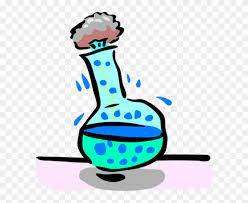Learning and Teaching

Congratulations everyone on a great week of work about Book Week. Each year level is celebrating in different ways. Check out some of their activities below.
Science
A few weeks ago, I wrote about Science Week and listed some activities you could do at home about science. Over the weekend, there were various experiments shared online to celebrate science. Some of the ideas you could try at home are listed below. Remember to be safe when participating in science activities.
Experiment 1 - Orange Fizz
Let’s start with something simple. You’ll only need two ingredients for this one: oranges and baking soda. Begin by cutting an orange into slices and sprinkling half a teaspoon of baking soda onto a separate plate. Dip a slice of the orange into the baking soda, then take a bite. The orange will begin to bubble - and fizz - in your mouth as you chew.
Mixing acids and bases make for exciting chemistry. The citric acid from the orange reacts to the baking soda base, which is the opposite of an acid. When they mix, they make millions of carbon dioxide bubbles, which is the same gas that makes soda fizzy.
Experiment 2 - Walking Water
Learn about the scientific magic of capillary action. Gather six cups and fill them halfway: three with water, one with red food colouring, one with blue colouring and one with yellow colouring. Alternate the clear and coloured cups as you line them up and use folded paper towels to make bridges between the cups. Leave to sit for one hour. Watch as your kids’ eyes light up as the coloured water ‘walks’ across the bridges and into the clear cups, creating a vibrant rainbow.
Because the adhesive force between the paper towel and the water is more powerful than the force inside the water, the paper towel pulls the water up. Who needs a pot of gold when you have capillary action?
Experiment 3 - Floating Stick Man
Sure, your kids might be able to draw a stick figure. But can they make him float? You’ll need a whiteboard marker and a glass or ceramic dish with a flat bottom. Draw your stick figure (or any design you desire), making sure all the lines are connected. Slowly pour water to cover your drawing, and watch it rise to life. For extra effect, blow on the stick figure to make him dance.
Because the pigments in the ink are insoluble, they can’t be dissolved in the water. They’re left behind as a solid and slide off the surface when they get wet.
Experiment 4 - The Leak-Proof Bag
Feel like a magician while you get your children thinking about chemical compositions. You’ll need a zip-top bag, sharpened pencils and water. Fill the bag with water and securely close it. Poke a pencil right through the bag so that it comes out the other side. Repeat with the rest of your pencils.
The reason water doesn’t spill out of the holes is because the bag is made of a flexible plastic polymer. The sharp point of the pencil slides in between the chain of molecules that make up the polymer. These molecules hug the pencil, creating a seal that won't let the water out.
Experiment 1 - 4 from RACV Best science experiments feature. The Guardian newspaper also had an article - From mentos in a bottle to playing with rainbows: science experiments children can do at home which lists lots of other experiments you can try.
Deborah Courtney
Director of Learning and Teaching


